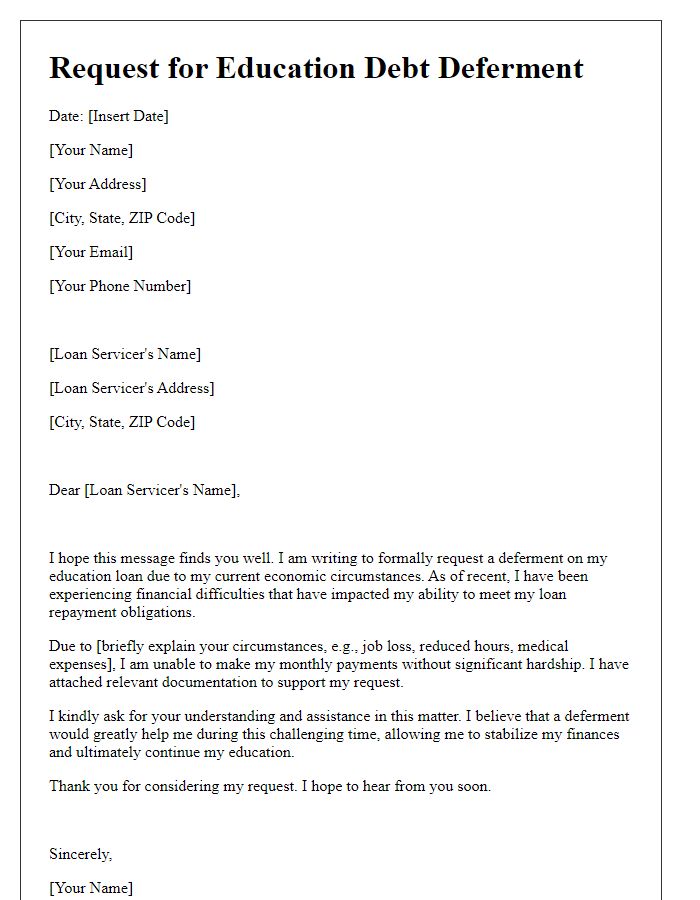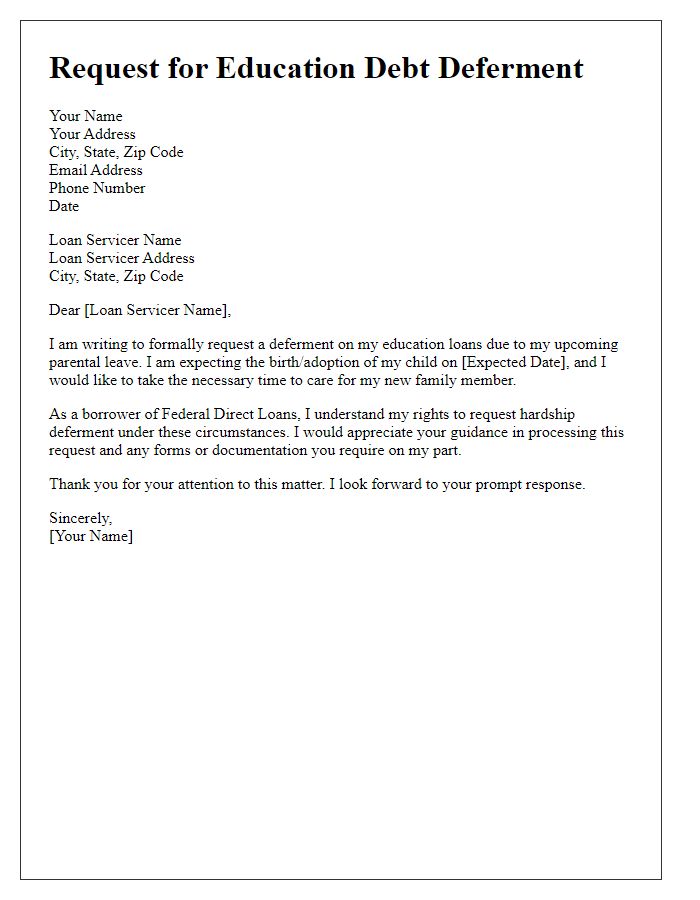Are you feeling overwhelmed by your education debt and considering deferment? You're not alone! Many students and graduates are navigating the complexities of managing their financial responsibilities as they pursue their careers. In this article, we'll guide you through crafting a compelling letter for an education debt deferment request, helping you to express your situation effectively and increase your chances of approval. So, let's dive in and explore the key elements that can make your request stand out!

Clear subject line indicating deferment request.
Education debt deferment requests necessitate clear documentation showcasing reasons for temporary relief from repayment obligations. These requests typically include essential details such as borrower identification (like a unique student loan account number), current financial hardships (such as unemployment or medical expenses), and supporting evidence (like recent pay stubs or unemployment benefits). In addition, the request should specify the deferment period (often ranging from three to twelve months) and outline the borrower's intention to resume regular payments post-deferment. Each lender may have unique submission guidelines, such as preferred communication channels (online portals, email, postal mail) and necessary forms to complete. The borrower's contact information must also be included for follow-up purposes.
Concise explanation of financial situation.
Financial difficulties can significantly hinder the ability to make timely student loan payments. Current circumstances may arise due to job loss, medical expenses, or other unforeseen financial burdens. Economic indicators show a widespread trend of rising living costs, with inflation rates hovering around 6% annually in many regions, further exacerbating financial strain. In this environment, individuals may find it increasingly challenging to allocate funds towards education debt. Therefore, seeking deferment options can provide the necessary relief to stabilize personal finances while maintaining commitment to future payment responsibilities.
Specific deferment duration requested.
Education debt deferment requests often involve financial obligations tied to student loans, such as those from the Federal Direct Loan Program or private lenders. A borrower may seek a deferment for a specific duration, such as twelve months, to temporarily suspend loan payments due to hardship situations like unemployment or medical issues. During deferment, interest may be capitalized on certain loans, potentially increasing the overall debt. The borrower must submit a formal request to the loan servicer, providing necessary documentation, including proof of situation and a clear articulation of the specific duration for deferment. Timely submissions are crucial to avoid penalties.
Supporting documentation and evidence.
Educational debt deferment can provide temporary relief for borrowers facing financial hardships. Supporting documentation is crucial in substantiating the request for deferment. Common forms of evidence include recent pay stubs, tax returns, or bank statements, providing a clear picture of current financial status. Borrowers may also include a letter detailing their circumstances, such as job loss, medical emergencies, or ongoing education endeavors. Additionally, documentation from an employer may serve as proof of reduced income or a job termination notice. It is essential to ensure all submitted documents are clear and legible to facilitate the review process efficiently.
Contact information for follow-up.
Education debt deferment requests require specific details to ensure proper handling. Students should provide their full name, current address, email address, and phone number for follow-up. This information is essential for loan servicers to communicate effectively regarding the status of the deferment. Important details to include may also involve the loan account number, the type of loan (such as Federal Stafford or Perkins), and the specific reason for the deferment request, whether it is due to unemployment, economic hardship, or enrollment in further education. Clear communication channels enhance the processing time, enabling a swift response to the deferment application.
Letter Template For Education Debt Deferment Request Samples
Letter template of education debt deferment application for financial hardship.

Letter template of education debt deferment request for unemployment status.

Letter template of education debt deferment inquiry for returning to school.

Letter template of education debt deferment petition for medical reasons.

Letter template of education debt deferment appeal for active military duty.

Letter template of education debt deferment application for recent graduate unemployment.

Letter template of education debt deferment request due to economic circumstances.

Letter template of education debt deferment petition for caring for dependents.






Comments